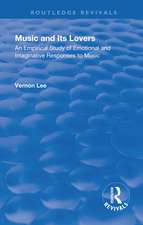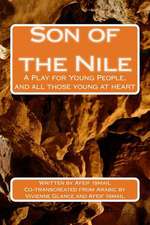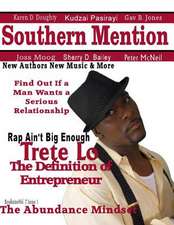Slow Tourism, Food and Cities: Pace and the Search for the "Good Life": Routledge Advances in Tourism
Editat de Michael Clancyen Limba Engleză Hardback – 24 aug 2017
This book provides an in-depth examination of slow food, tourism and cities, demonstrating how these elements are intertwined with one other as part of the modern search for "the good life." Part 1 locates the slow concept within the larger social setting of modernity and investigates claims made by the slow movement, examining aesthetic and instrumental values inherent to it. Part 2 explores the practices and places of slow, containing both conceptual and empirical chapters in Italy, the birthplace of the movement. Part 3 provides a comparative perspective by examining the practices in Spain, the UK, Germany and Canada.
Slow Tourism, Food and Cities offers key theoretical insights and alternative perspectives on the varying practices and meanings of slow from a cultural, sociological and ethical perspective. It is a valuable text for students and scholars of sociology, geography, urban studies, social movements, travel and tourism, and food studies.
| Toate formatele și edițiile | Preț | Express |
|---|---|---|
| Paperback (1) | 413.72 lei 6-8 săpt. | |
| Taylor & Francis – 5 mar 2019 | 413.72 lei 6-8 săpt. | |
| Hardback (1) | 1003.61 lei 6-8 săpt. | |
| Taylor & Francis – 24 aug 2017 | 1003.61 lei 6-8 săpt. |
Din seria Routledge Advances in Tourism
-
 Preț: 319.24 lei
Preț: 319.24 lei -
 Preț: 349.17 lei
Preț: 349.17 lei -
 Preț: 319.01 lei
Preț: 319.01 lei -
 Preț: 436.14 lei
Preț: 436.14 lei -
 Preț: 471.25 lei
Preț: 471.25 lei - 25%
 Preț: 828.48 lei
Preț: 828.48 lei - 18%
 Preț: 1000.30 lei
Preț: 1000.30 lei -
 Preț: 491.68 lei
Preț: 491.68 lei - 30%
 Preț: 848.55 lei
Preț: 848.55 lei -
 Preț: 413.72 lei
Preț: 413.72 lei -
 Preț: 439.85 lei
Preț: 439.85 lei - 18%
 Preț: 1056.32 lei
Preț: 1056.32 lei -
 Preț: 492.53 lei
Preț: 492.53 lei - 18%
 Preț: 1001.84 lei
Preț: 1001.84 lei -
 Preț: 410.66 lei
Preț: 410.66 lei -
 Preț: 389.27 lei
Preț: 389.27 lei -
 Preț: 420.34 lei
Preț: 420.34 lei -
 Preț: 479.51 lei
Preț: 479.51 lei -
 Preț: 364.94 lei
Preț: 364.94 lei -
 Preț: 409.13 lei
Preț: 409.13 lei -
 Preț: 388.42 lei
Preț: 388.42 lei -
 Preț: 449.63 lei
Preț: 449.63 lei - 13%
 Preț: 309.58 lei
Preț: 309.58 lei - 60%
 Preț: 487.89 lei
Preț: 487.89 lei -
 Preț: 487.86 lei
Preț: 487.86 lei -
 Preț: 445.38 lei
Preț: 445.38 lei -
 Preț: 418.94 lei
Preț: 418.94 lei - 30%
 Preț: 845.69 lei
Preț: 845.69 lei - 18%
 Preț: 1061.93 lei
Preț: 1061.93 lei - 69%
 Preț: 445.64 lei
Preț: 445.64 lei - 62%
 Preț: 422.28 lei
Preț: 422.28 lei - 18%
 Preț: 1379.09 lei
Preț: 1379.09 lei - 55%
 Preț: 496.87 lei
Preț: 496.87 lei
Preț: 1003.61 lei
Preț vechi: 1223.92 lei
-18% Nou
Puncte Express: 1505
Preț estimativ în valută:
192.10€ • 208.74$ • 161.47£
192.10€ • 208.74$ • 161.47£
Carte tipărită la comandă
Livrare economică 22 aprilie-06 mai
Preluare comenzi: 021 569.72.76
Specificații
ISBN-13: 9781138920910
ISBN-10: 1138920916
Pagini: 264
Ilustrații: 22
Dimensiuni: 156 x 234 x 22 mm
Greutate: 0.55 kg
Ediția:1
Editura: Taylor & Francis
Colecția Routledge
Seria Routledge Advances in Tourism
Locul publicării:Oxford, United Kingdom
ISBN-10: 1138920916
Pagini: 264
Ilustrații: 22
Dimensiuni: 156 x 234 x 22 mm
Greutate: 0.55 kg
Ediția:1
Editura: Taylor & Francis
Colecția Routledge
Seria Routledge Advances in Tourism
Locul publicării:Oxford, United Kingdom
Public țintă
Postgraduate and UndergraduateCuprins
1. Introduction: The rise of slow in a fast world Part I: Locating Slow: the philosophical and sociological roots of the Slow movement 2. "Travel too fast and you miss all you travel for": slower mobilities and the politics of pace 3. Slow tourism: a theoretical framework 4. Slow travel and tourism: new concept or new label? 5. Practicing Slow: political and ethical implications Part II: Places and practices of Slow 6. Creative tourism as slow tourism 7. Slow food in slow tourism 8. Slow and intelligent cities: when slow is also smart 9. Between slow tourists and operators: expectations and implications of a strategic cross-border proposal 10. Cittàslow: the Emilia-Romagna case Part III: Comparative perspectives 11. Successful integration of slow and sustainable tourism: a case study of food tourism in the alpine region of Algovia, Germany 12. The experiential value of slow tourism: a Spanish perspective 13. Embedding slow tourism and the ‘Slow Phases’ framework: the case of Cambridge, UK 14. Drinking in the good life: tourism mobilities and the slow movement in wine country 15. Conclusion: the promises and pitfalls of slow
Descriere
This book provides an in-depth examination of slow food, tourism and cities, demonstrating how these elements are intertwined with each other and the larger slow movement, as part of the modern search for "the good life." While slow tourism has been present as a concept and practice for years, organizationally and conceptually its principles are still emerging. This book systematically treats food, cities and tourism within the context of the larger alternative lifestyle movement with examples from Europe, USA and Brazil. Part 1 locates the ‘slow’ concept within the larger social setting of modernity and investigates claims made by the slow movement. It examines both the aesthetic and instrumental values behind the movement. Part 2 explores the practices and places of slow, containing both conceptual and empirical chapters. Finally, part 3 looks at the emergence of slow food, tourism and cities in a comparative perspective by examining the practices from Spain, UK, Germany and Brazil.


























